Palm Oil Waste For Making Biofuel – New Plant to Open in Indonesia
by Joanna Burns September 3, 2015Biofuels are the way of the future. Generating quality fuels from organic waste could have seemed technically impossible twenty or so years ago, but the realities the world is faced with have made biofuels a very real thing. First on the scene was production of octane-based fuels from sugar cane and similar plants. Some Latin American countries have been producing such fuels since the technology has been invented basically. With the advancements of biofuel technology, other types of fuel could also be produced using organic waste. Cetane based fuels (diesels) are now produced using waste oil products. One of the latest additions in the family of biofuels is organically derived liquefied fuel gasses, produced through highly advanced technology, with relatively little use of chemicals. At this stage though, many biofuels are still mixed with fossil fuels derived and refined in the traditional way as some of the biofuel examples don’t have the same strength and purity as their fossil counterparts.
At the moment, Indonesia is organising the construction of a highly advanced biofuel refinery installation which when ready will produce energy from palm oil waste. Palm oil is the common cooking oil in most of Southeast Asia, therefore waste palm oil is readily available. Even if supply of waste palm oil runs low in the country, authorities can relatively easy secure and import similar waste from neighbouring countries. The new installation is supposed to be highly efficient, even self-sustained to an extent as it will be constructed in close proximity to an actual palm oil refinery and production site operated by one of the companies responsible for the construction of the waste to energy plant. Talking about reduced rubbish removal costs – these guys have got it made.
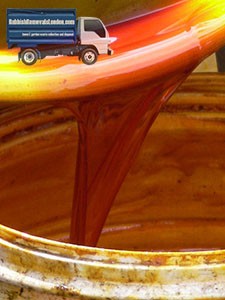 At the moment, the palm oil refinery and production site is powered by diesel generators – definitely not an ecofriendly way to power up a factory. The upcoming waste to energy plant will use fermented palm oil waste in order to feed the production process of biogas. The diesel generators will eventually be removed and replaced with gas turbines, producing power for the plant’s needs. The new gas turbines will be powered by, yes you guessed it – the biogas produced next door.
At the moment, the palm oil refinery and production site is powered by diesel generators – definitely not an ecofriendly way to power up a factory. The upcoming waste to energy plant will use fermented palm oil waste in order to feed the production process of biogas. The diesel generators will eventually be removed and replaced with gas turbines, producing power for the plant’s needs. The new gas turbines will be powered by, yes you guessed it – the biogas produced next door.
The biogas plant will use a production technology known as anaerobic digestion. The anaerobic system allows for more effective mixing of solid and sludge feedstock (the term describes the waste material fed into the biofuel production system). Anaerobic systems allow for increased fuel production as solid waste is broken down quicker which makes everything more efficient i.e. more fuel produced in shorter time. The beauty of the new production plant is that refuse or residue from the biogas production process is actually non-toxic, better still – residue is actually good for soil and will be used effectively as fertiliser/nutrient supplement in agriculture. The residue is actually a liquid effluent which can be irrigated directly onto arable land. The effluent itself can be further refined so it becomes a higher quality soil supplement. The biofuel plant is expected to be in operation by end of twenty sixteen.
Living in a house is great as you won’t have to deal with unpleasant neighbours (at least not in the immediate vicinity). However it is also a responsibility as you must take good care of your property. Here are the household features that you must regularly check, so that you can have the peace of mind that your home is in proper condition.
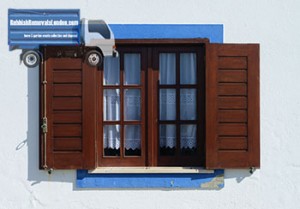 Windows – Do you wonder how it is possible to run the heater all day and still feel the cold from the outside? The answer to this unpleasant conundrum is the windows. Windows are the main leakage source of indoor air. So, every now and then check your windows from holes and cracks. If you notice such damages fixed them momentarily and your problem will be solve. If your windows are in good shape then you should check the doors because they are the secondary leakage source of indoor air.
Windows – Do you wonder how it is possible to run the heater all day and still feel the cold from the outside? The answer to this unpleasant conundrum is the windows. Windows are the main leakage source of indoor air. So, every now and then check your windows from holes and cracks. If you notice such damages fixed them momentarily and your problem will be solve. If your windows are in good shape then you should check the doors because they are the secondary leakage source of indoor air.
Gutters – The gutters are features that permit rain water to drain from your roof and exterior walls. However, they also tend to accumulate vast amount of debris which block them. Clogged gutters can heavily damage your exterior walls and roof, so after each storm get on a ladder and check them thoroughly. Once you have collected the debris you can call a professional rubbish removal company to come and dispose of it.
Roof – Most people neglect their roof as they assume that it cannot sustain damages. Sadly, the reality is quite different, as the roof is the element of a house that is the most exposed to the various weather conditions. The best time to check your roof is before and after winter.
Ventilation system – If you have a centralised ventilation system, you should clean it regularly. Clogged vents just like blocked gutters can cause severe damages to the overall structure of your house and can contaminate severely the indoor air. Just like the roof it is for the best if you check the functionality of your ventilation system before and after the winter.
Pipes – Broken and damaged pipes can be a total nightmare, as they can flood the foundations and walls of your home. Therefore, conduct monthly or bi-monthly checkups of your pipes just to be on the safe side. Also during the winter, drain your garden pipes and close the valve. If water is left into the pipes it may freeze and damages your pipes beyond repair.
Foundations – Your house stands on its foundations, which means that damaged foundations can be quite dangerous and hazardous. So, check your foundations at least once a year and if you notice any cracks, fix the as soon as possible. Once you have repaired the foundations, use rubbish removal services to clear the generated builders waste.
Electrical wiring – Poor electrical wiring is the number one reason for domestic fires. So, if you notice any power surges or electrical glitches, check your electrical wiring. By maintaining your wires in properly condition you will also maintain the power consumption of your household to a minimum which will automatically reduce your utility bills.
There is much truth in the statement that a home move is a costly endeavor. New homeowners however should be warned that once they have arrived at their new place, the expenses do not end. You might think that you have considered your household’s budget well, but wait until you read about all those unexpected and often quite unpleasant expenses that new homeowners have to meet:
 Changing the locks. That should be your top priority, no matter whether you move in a newly built home or an old one. In any case, you cannot possibly know how many copies of your keys flow around, so it is better to play it safe and call the locksmith – or if you are confident enough, do the job on your own. In any case, even if you pick up the cheapest set of locks (which is unadvisable) you will still have to dig into your pocket.
Changing the locks. That should be your top priority, no matter whether you move in a newly built home or an old one. In any case, you cannot possibly know how many copies of your keys flow around, so it is better to play it safe and call the locksmith – or if you are confident enough, do the job on your own. In any case, even if you pick up the cheapest set of locks (which is unadvisable) you will still have to dig into your pocket.- Rubbish removals. What about the council service? Well, the present day British waste management policies and services delivered by local councils are nowhere near good. Did you know that there are places out there where collection is done once every two weeks? If you want a junk free property, you will have to call a professional rubbish removal company. But have no fear, they are not as expensive as it may sound.
- If your house has a yard, then the lawn maintenance and gardening is another hole to fill with money. You should either buy a mower or hire a contractor to do the job. In either case, there goes another thing to spend money on.
- Updating the windows by addition insulation etc. thus improving the energy efficiency of your home – when you come to think of it, it is not so much an expense than rather an investment in the future.
- Window treatment is another thing that you should buy – if you are moving into a fresh new place, because you won’t have one, and because it is likely to be severely outdated if the house is old. In any case, be prepared to spare some cash to that too.
- Cosmetic updates of any sort. If you don’t like the color of the walls in some of the rooms, or you want to add some sort of decorative pieces, it will come at a price, depending on the nature and scale of the update you are about to make.
- The rising property taxes. Now, that’s an unpleasant turn of events. Property taxes have been on a gradual rise for years, and even if you think that you are prepared for them, it is not late to be surprised.
Before you get scared away from the idea of even getting your own home. Breathe deeply and don’t worry – good budget management is not something impossible to achieve. All you need is a little discipline and proper preparation. Do your research, go over the to-do list with a cool head and you will see that it is all quite manageable.
Today we will turn your attention towards several tricks that will give to your home a more summery feeling.
Instead of having a wool carpet in your living room, you can replace it with a lightweight rug. The new floor covering will give a fresher look to the room and more importantly won’t remind you of the cold days. If you don’t have a lightweight rug, know that you can simply remove the wool carpet and leave your floor naked. After all, naked floors are quite beautiful and interesting.
Replace your current artwork, with paintings that depict sunny landscapes and seascapes. If you live in a coastal city, you can head to the beach and gather seashells and arrange in several vases throughout your home. Alternatively, if you don’t have the necessary budget to replace your decorative features, you can simply move your artwork around. You will be amazed how little is needed to drastically change the overall ambiance of your household.
Just like wool carpets, wool cushions are a reminder of the cold days and months. So, replace them with their lighter counterparts. For example you can opt to place cotton or linen cushions on your bed and couch. Also, don’t opt for dark tones, instead go with bright and vibrant colours and scream warmth.
Remove the outer draperies from your window treatments and leave the lightweight curtains. By doing so, you will allow more sunlight to enter into your home, thus create a fresher atmosphere. Also open the windows and allow the fresh summery breeze to enter into your household.
Sleeping in heavy bedding shouldn’t be an option during the warmer months of the year. So, update your beddings by buying new linens. Make sure that you purchase at least two sets, so that you can rotate them periodically. You can also use a light toned bed cover to wrap your bed.
Head to your basement or garden shed and get your garden and patio furniture. Wash the furnishings and arrange them throughout your patio and backyard. There is no better way to welcome the summer than to start using your outdoor areas.
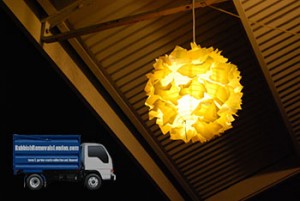 You can enhance your garden furthermore by installing lantern or lamps. This way you will be able to properly illuminate your backyard during the night and use it to host various gatherings. The only downside of this trick is that you will most probably generate a serious amount of waste, which can only be cleared with the aid of professional rubbish removal services. However, don’t be alarmed about this because nowadays most rubbish removal companies work with cost effective service fees.
You can enhance your garden furthermore by installing lantern or lamps. This way you will be able to properly illuminate your backyard during the night and use it to host various gatherings. The only downside of this trick is that you will most probably generate a serious amount of waste, which can only be cleared with the aid of professional rubbish removal services. However, don’t be alarmed about this because nowadays most rubbish removal companies work with cost effective service fees.
Use summer flowers to decorate both the indoor and outdoor areas of your household. Summer flowers are colourful, have a hypnotizing aroma and are extremely beautiful. You can also plant such flower throughout your backyard and have the peace of mind that you will be able to enjoy them, each summer.
As you can see, you can easily give a more summery mood to your home, by simply conducting several changes.
Are you annoyed by the fact that you have a small closet and too much clothes? If so, know that there are several practical solutions for your conundrum and if you keep reading you will learn them because we have listed them down below.
Most closets have a single clothe bar in the upper side of the cabinet. However, it doesn’t have to be this way as you can mount a secondary bar on the lower side of the closet. This way you will double the storage capacity. The only downside of this simple but effective solution is that you will have to fold your trousers in two before placing them on the hangers.
 If installing a second clothes bar isn’t a possibility, then you should substitute your hangers with shower rings. The rings take less space than hangers and can be used to hang your tank tops, t-shirts, shirts and so on.
If installing a second clothes bar isn’t a possibility, then you should substitute your hangers with shower rings. The rings take less space than hangers and can be used to hang your tank tops, t-shirts, shirts and so on.
It may sound odd but very few people use the backside of the closet doors. The truth is that the backside of the doors is a valuable space that can be utilised for the storage of small items such as belts, hats, purses and so on. Simply mount or hang basket and voila, you will have augmented the storage capacity of your otherwise small closet.
Another option is to get rid of the door. By doing so, you will free more space which can be used to the storage of your clothes. However having a door-less closet shouldn’t be an option. So instead hang a curtain and use it as a door.
If your closet it deep enough you can squeeze in a shelf on wheels. The shelf will provide to you addition storage space which you can use to store your not so essential clothes. Nowadays shelf on wheels are sold in various sizes and shapes, so you can be certain that you won’t have a hard time finding one that fits perfectly into your closet.
If a shelf of wheels isn’t by your taste, you can fold your pants in two before hanging them and slip a dresser underneath your clothes. This way you will have enough space to properly systematise your clothing and keep them all in one place.
Shoe boxes and shoes in particular tend to take a lot of space. So instead of cramping your footwear onto your closet’s floor, use a triangular show organiser. Such features have an incredible storage capacity despite their seemingly small size. By choosing this option you will also be able to properly arrange your shoes which will save you a lot of time when you are getting ready to go to work or to get out with friends.
Once you are done remodeling your closet in order to increase its capacity, make sure that you call a rubbish removal company to collect the generate builders waste. You will need professional waste clearance services as you will be too tired to remove the garbage on your own.
Bonus: You can use dividers to organise and therefore augment the storage capacity of your closet.
According to the recent statistics, British households produce some 11.9 million tons of rubbish per year, which means that every British home is responsible for nearly half a ton of household waste every year. Those figures are huge, and there is no wonder why so many people talk about the impact everyday domestic activities have on the environment.
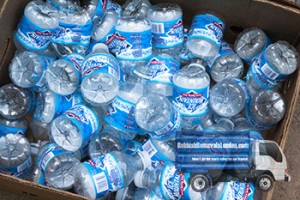 If you want to do something good for the planet, reducing the amount of junk your rubbish removal company has to collect from your property is a good place to start. Optimizing the rubbish removal process by actually making the amount of waste that is to be removed less is the first step to a more environmentally responsible lifestyle, and making a real difference in the world.
If you want to do something good for the planet, reducing the amount of junk your rubbish removal company has to collect from your property is a good place to start. Optimizing the rubbish removal process by actually making the amount of waste that is to be removed less is the first step to a more environmentally responsible lifestyle, and making a real difference in the world.
The first measure to take is to actually consciously examine the amount of junk your household produces on a daily basis. By doing so you will have the opportunity to better assess the situation and figure out a way to reduce those amounts. Don’t forget before doing this to acquaint yourself with what materials are recyclable in the depots in the area you live, and which are not. Recycling is an important aspect of the responsible rubbish removal project, and the more efficient you make it, the better.
A really trendy process that is more and more often employed in households all over Britain is composting. Food scraps are the most frequent type of junk produced by households and this process aims at naturally decomposing them and turning them into earthly smelling and looking material referred to as compost. You can use the compost to enrich the soil in your garden, because it is very rich in nutrients.
There is another method that will help you reduce the amount of junk produced by your household. It requires creativity or at least a little research in advance. We are namely talking about using old, seemingly unnecessary items, for purposes other than their original ones, instead of just throwing them away. This method can be applied for a huge variety of items – from old plastic bottles to broken furniture. Fortunately the Internet is full of useful advice on repurposing items, so all you have to do is make a Google search.
Buying more high quality items for your household activities – from toys to utensils – will considerably reduce the amount of waste you produce at home. It can seem a bit costly to do so, but in the long run you are going to realize it is actually cheaper, because high quality items tend to break down less often.
Last but not least, try to bring less junk in your home. The easiest way to do so is give up on the plastic shopping bags, and start shopping at your local farmers’ market for produce, instead from the supermarket, so that you cut back from the packaging you are either way just going to throw away. And it will be much tastier (and healthier) too when you come to think about it.
At the moment, the waste management and recycling industries are considered to be some of the most dangerous to work in. To an extent this also includes domestic and commercial rubbish removal procedures, though the particular research focuses mainly on industry segments after waste collection stage.
In period twenty thirteen – twenty fourteen, the UK’s waste management and recycling industries have proven to be amongst the most dangerous fields to work in. This particular segment of the economy accounts for about half a percent of employment in Great Britain. One the same note, two point six percent of all work related injuries in the same period are reported to have occurred in the waste management and recycling industry.
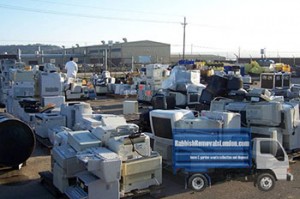 In the period twenty thirteen – twenty fourteen, official figures show that there were four fatal accidents reported in the waste management industry in comparison to an average of nine such unfortunate events over the previous five year period. Also, there was one fatal injury to member of the public as compared to an average of two such tragic events per year, over the previous five year period.
In the period twenty thirteen – twenty fourteen, official figures show that there were four fatal accidents reported in the waste management industry in comparison to an average of nine such unfortunate events over the previous five year period. Also, there was one fatal injury to member of the public as compared to an average of two such tragic events per year, over the previous five year period.
The waste management and recycling industry is marching forward in terms of efficiency and ingenuity, but it seems there is still a long way to go in terms of safety. In the five year period between two thousand nine and two thousand fourteen, three out of ten fatal accidents were caused by vehicles hitting workers at waste treatment and processing sites. Furthermore, four out of ten specifically reported injuries were caused by trips and slips at waste processing sites / depots.
Unfortunately such tragic events do happen even in multi billion pound segments of the economy like the UK’s waste management industry. To show how big the industry really is, here is a perspective – the UK generates nearly two hundred and thirty million tonnes of waste annually, it is estimated that there are about hundred and sixty thousand people engaged in waste management and recycling in the UK alone.
More extensive training is perhaps one of the departments where improvements are needed. The waste management and recycling industry in itself is a dangerous workplace. Workers come in contact with different materials and substances, some of them hazardous on a daily basis. They also operate heavy, large sized equipment and machinery which can cause lifelong disability and potentially fatal injuries.
Watchdog organisations and industry specialists put emphasis on adequate employee training. Staff must be trained to recognise and avoid potential risks and hazards in the course of everyday duties. The same applies to using heavy equipment and machinery. Onsite traffic is another big issue as large vehicles with limited driver visibility are amongst the biggest threats to waste management workers. Poor weather conditions are also a big problem for worker safety when rubbish removal vehicles are collecting and dumping waste.
It is expected that health and safety regulations and standards will be reviewed and further developed as well as improved by UK authorities in the upcoming months. The new rules will apply to all waste management and recycling industry participants.
 If your family is expecting a new recruit in the face of a baby, you probably could not be more excited. At the same time, there are quite a lot of things that you should take care of, and deciding on the design of the baby’s room and actually making it happen is one of them. We have listed several of the most common ideas that will give you a general impression on what you like and would want to see in your home.
If your family is expecting a new recruit in the face of a baby, you probably could not be more excited. At the same time, there are quite a lot of things that you should take care of, and deciding on the design of the baby’s room and actually making it happen is one of them. We have listed several of the most common ideas that will give you a general impression on what you like and would want to see in your home.
- The classical baby room is one that combines style and functionality. It has plain walls and uses soft color shades in order to create a space that is soothing and comfortable and will definitely be up to the needs of your baby.
- In order to make your baby’s room even more appealing, you can add some pieces of art, hung in frames on strategic places on the walls. It is a good idea for the art not to be directly exposed to sun light, but have in might that strategically placed lamps around the frames will definitely improve the way they look like. The presence of sufficient lighting in the room is of utmost importance. Once the kids start growing and move around freely, they will need enough light for their activities, as well as for finding the way to the bathroom at night for example – so in addition to overall lighting, make sure to install additional reading lamps on strategic places around the bed.
- Once your little ones are not so little anymore, and start moving around the place, make sure that they have easy access to all the items – like toys – that they might need. The best way to do that is place those things at a height near the kid’s one. In the same fashion, get potentially dangerous objects out of reach, so that the kid cannot reach it when you are not present in the room.
- Kids are notorious for their love of painting. The problem is that they prefer painting on walls instead of on paper. That’s why it would be best just to convert one of the walls of the kid’s room in an art space – paint it over with chalkboard paint – they come in various colors – and let your kid use his or hers imagination.
- You can make your own magnetic wall thanks to the affordability and availability of galvanized metal in every hardware store. Get enough sheets to cover the wall and thus you will provide your kid with unique display space.
Now these are only a couple of ideas to get you started. Naturally you will find those that will best appeal to your taste and consideration what is appropriate for your little one. Have in mind that designing and decorating a kid’s room is a serious home improvement project, and you will need a good rubbish removal service once everything is completed – that’s the only way to fully enjoy the results of your hard work immediately.
The stats on steel recycling in Europe for twenty fourteen are still being processed but the figures for twenty thirteen are already in, and it’s all smiles. The old continent has always had one of the highest, if not the highest steel recycling rate in the world. The rate has been gradually climbing over the last number of decades, to reach its highest value ever in twenty thirteen – the staggering seventy five percent! This might be only a notch up from the seventy four percent steel recycling rate in twenty twelve, but on an overall scale, these figures are nothing short of impressive.
Recycling of steel in Europe might be at an all-time high, but the same can’t be said about other recycling streams as unfortunately rates in those appear to be somewhat stagnant. Data provided by the Association of European Producers for Steel for Packaging (APEAL) have been supplied for analysis to watchdog organisation Eunomia. Organisation experts have attested that the positive figures in steel recycling across Europe were expected, and happen to be the result of more than twenty years of improvement of steel recycling legislation, practices and policies. Manufacturers across the European continent have invested their collective effort in development of more efficient steel rubbish removal practices, better separation and extraction methods, less energy intensive recycling techniques etc.
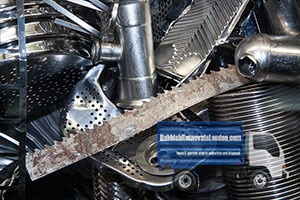 The current aim is for all steel manufacturers across the European continent to reach a voluntary recycling rate of eighty percent by the year two thousand twenty, which is when the Europe Twenty Twenty Initiative is up for review. Industry specialists say that there is still work to be done in terms of policies and regulation of steel recycling on a Union level, but the European Parliament seems to be taking matters seriously and taking steps in the right direction.
The current aim is for all steel manufacturers across the European continent to reach a voluntary recycling rate of eighty percent by the year two thousand twenty, which is when the Europe Twenty Twenty Initiative is up for review. Industry specialists say that there is still work to be done in terms of policies and regulation of steel recycling on a Union level, but the European Parliament seems to be taking matters seriously and taking steps in the right direction.
What does steel recycling actually mean when put in perspective? Since numbers are the universal language so to speak, here are some hard figures on steel recycling:
- Recycling of steel (particular steel packaging) saves one and a half times its weight in CO2 emissions;
- One ton of recycled steel saves the planet more than two tons of raw materials needed to produce the same amount of new steel;
- For years now, steel packaging is the most recycled material across the European Union;
- Steel packaging is one of the most easily supplied sources of recyclable material as steel is present in more than fifty percent of all product packaging;
- In twenty thirteen three quarters (or seventy five percent) of all steel and packaging in Europe was recycled;
To put the whole steel recycling challenge in perspective – through adequate improvements and developments on both technical and legislative level, Europe has managed to triple its steel packaging recycling rate in the last twenty years. However, at the moment there is one issue for steel manufacturers and recyclers in Europe, and that is the scrapping of the Circular Economy Package by the European Commission at the start of twenty fifteen. It is expected though for authorities to come up with a suitable legislative replacement very soon.
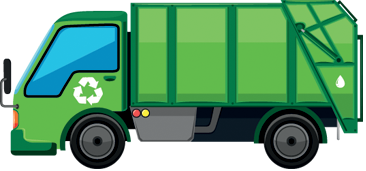

 Changing the locks
Changing the locks